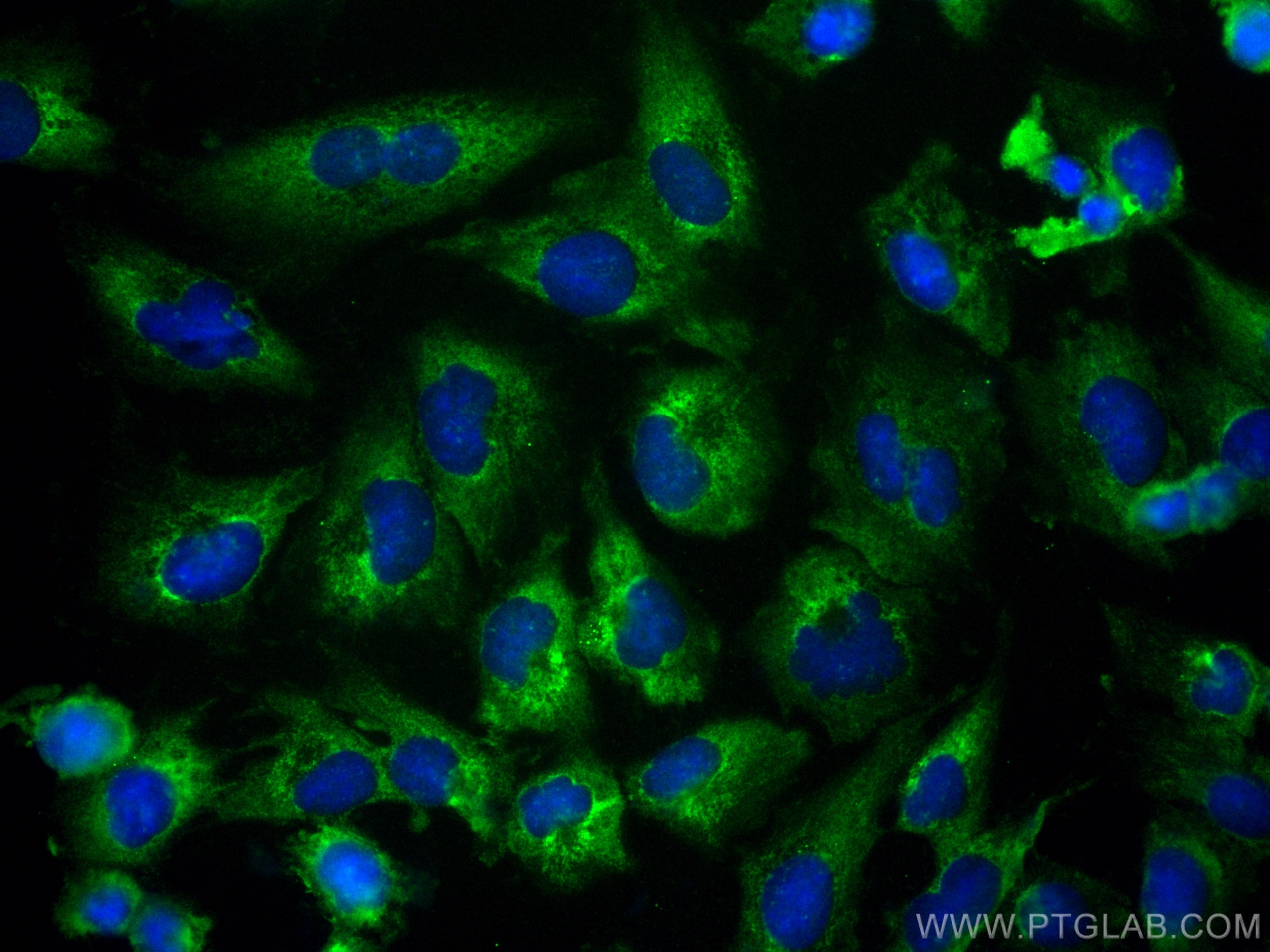Tested Applications
| Positive IF/ICC detected in | U-251 cells |
Recommended dilution
| Application | Dilution |
|---|---|
| Immunofluorescence (IF)/ICC | IF/ICC : 1:50-1:500 |
| It is recommended that this reagent should be titrated in each testing system to obtain optimal results. | |
| Sample-dependent, Check data in validation data gallery. | |
Product Information
CL488-68225 targets calcyphosine in IF/ICC applications and shows reactivity with human, pig, rabbit samples.
| Tested Reactivity | human, pig, rabbit |
| Host / Isotype | Mouse / IgG1 |
| Class | Monoclonal |
| Type | Antibody |
| Immunogen | calcyphosine fusion protein Ag10330 Predict reactive species |
| Full Name | calcyphosine |
| Calculated Molecular Weight | 189 aa, 21 kDa |
| Observed Molecular Weight | 21 kDa |
| GenBank Accession Number | BC080599 |
| Gene Symbol | calcyphosine |
| Gene ID (NCBI) | 828 |
| RRID | AB_3672980 |
| Conjugate | CoraLite® Plus 488 Fluorescent Dye |
| Excitation/Emission Maxima Wavelengths | 493 nm / 522 nm |
| Form | Liquid |
| Purification Method | Protein G purification |
| UNIPROT ID | Q13938 |
| Storage Buffer | PBS with 50% Glycerol, 0.05% Proclin300, 0.5% BSA, pH 7.3. |
| Storage Conditions | Store at -20°C. Avoid exposure to light. Stable for one year after shipment. Aliquoting is unnecessary for -20oC storage. |
Background Information
calcyphosine is a calcium-binding protein, which may play a role in the regulation of ion transport. Calcyphosine (CAPS) was initially identified in the canine thyroid but has also been detected in humans and other mammals. CAPS synthesis is increased by thyroid‐stimulating hormone and cAMP analogs that promote cell proliferation and maintain cell differentiation. Recently, CAPS was found to be involved in many kinds of tumor.
Protocols
| Product Specific Protocols | |
|---|---|
| IF protocol for CL Plus 488 calcyphosine antibody CL488-68225 | Download protocol |
| Standard Protocols | |
|---|---|
| Click here to view our Standard Protocols |



